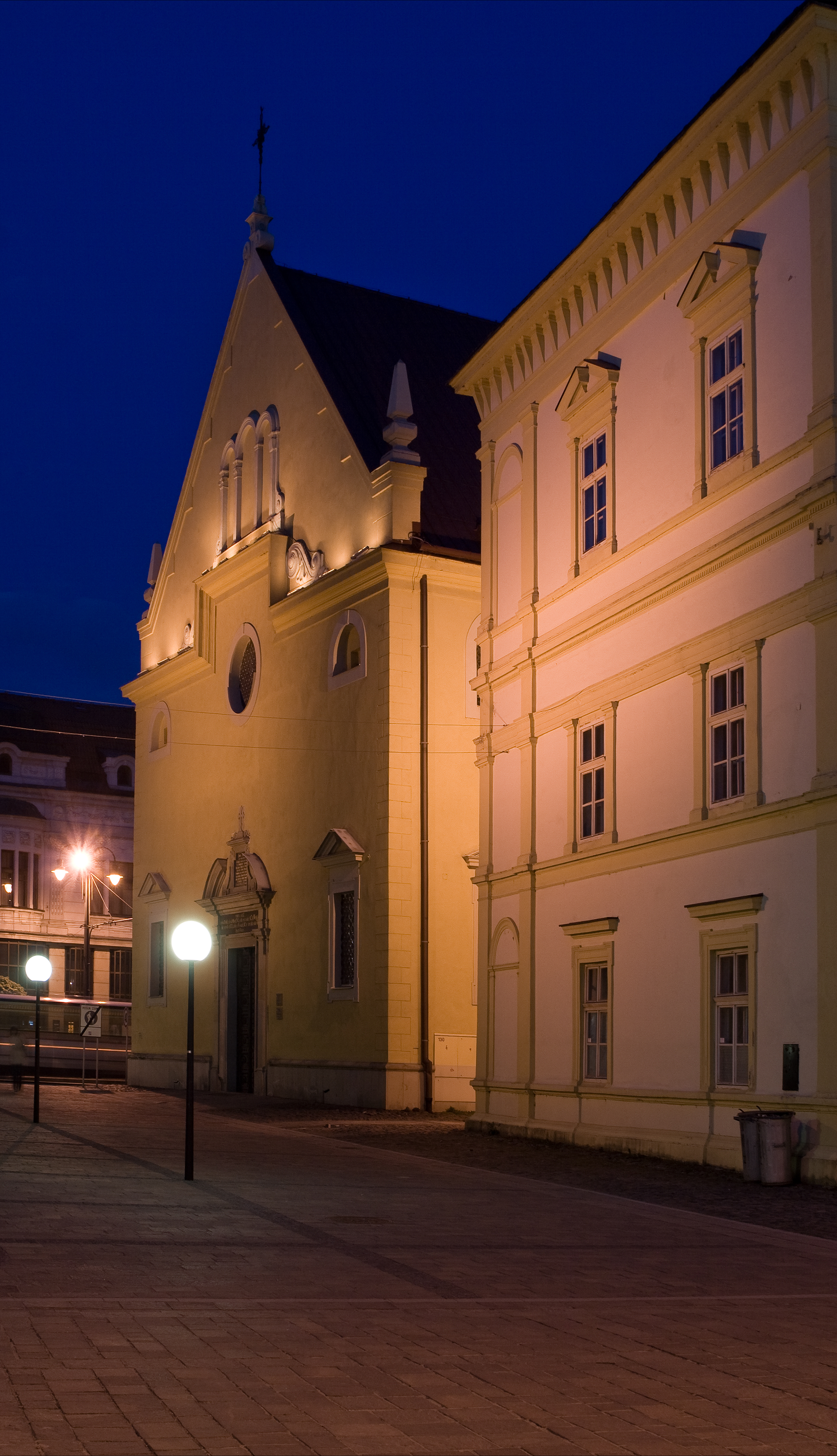Evangelic Church of the Augsburg Confession of the Holy Trinity

This Renaissance temple is quite rare in this territory and represents one of the few Protestant churches built in Slovakia during the Reformation period. The length of the building is 36 metres; its width is 12 metres and inner height is 13metres.
Both the Evangelicals and the Calvinists used mostly the older gothic, previously Catholic temples, and only rarely they built new ones. In the first half of the 17th century in Prešov the number of the Hungarian burghers rose considerably. The church in the Slovak Street used as the Hungarian Evangelical Temple was small and could not satisfy the believers’ needs. A City Council decided to build a new Hungarian church to be built on the place on the square, next to the German church, on the place of the original Church of St. Ladislav. The foundation stone was ceremoniously laid on the 25th July, 1642.
The construction of the temple took five years and was ceremoniously blessed on June 16th, 1647. A stone tablet was situated under the main portal with a Latin inscription. The church was designed as a typical Renaissance one nave with trihedral ending, choir stands on the floor on both sides of the ship and organ on the north side of matroneum. The mere notion of architectural and artistic works, its austere interior decoration and inner decoration meet the needs of the Lutheran Church.
The further destiny of both the temple and the College buildings represent actually a chronicle of the Reformation and anti-reformation history in the city. The authorities confiscated the church in 1670 after the suppression of the Wesselényi Conspiracy for the first time. Three years later, after the occupation of the city by soldiers, the temple was given to the Jesuits who settled in the other confiscated building of the College. They owned it for 89 years. The church came into the possession of the original owner even twice more: during the Imrich Thokoly Uprising and the Ferenc II Rákóczi Uprising. In spite of the Capitulation Agreement allowing the Church to keep the temple, Queen Eleanor ordered the Evangelicals to leave all the churches on the territory of the city.
The Jesuits moved into the church again and stayed there until 1773 when their Order was cancelled. Several reconstructions were made in this period, but they were removed later. The joining of the northern choir to the vault roofed corridor in the southern tract of the College building was the most significant of them. The Jesuits built the main altar of the Holy Virgin, the side altars of St. Ignatius and St. Francis of Xavier in 1673. Altar of the crucified Christ and Suffering Holy Virgin was built by them in 1696. Four more altars were built in 1731.
Pope Clement XIV put an end to the Jesuit Community in 1773 and the church became a property of the city’s chamber, in 1783 together with the College building they were put on public auction. The municipal authorities and some merchants were interested in buying the church. The church was purchased by the Evangelicals’ for 6000 golden ducats with a support from the Emperor and King Joseph II. He visited the city in 1770 and was familiar with the Evangelicals’ problems. The Evangelicals got the College building into their possession in the same period.
In 1783 the temple became a property of the Evangelical Church of the Augsburg Confession again. It was used by both Slovak and German (later Hungarian and German) choirs from its beginnings to 1945. Both choirs were involved in its reconstruction and preservation. The church burnt out in 1913 for the last time. The fire destroyed the altar picture and heavily damaged the organ and the altar. The last concise reconstruction of the church took place from 1980 to 1981. The organ was renewed several times, last time in 1997. It belongs to the most beautiful baroque sights of Prešov.